
Acetaminophen Safety Calculator
Find Your Safe Acetaminophen Dose
This calculator helps determine your safe daily acetaminophen limit based on your liver health and alcohol consumption. The maximum safe dose for healthy adults is 4,000 mg, but many people with liver conditions need to reduce this significantly.
Every year, thousands of people in the U.S. end up in the emergency room because they took too much acetaminophen-not because they meant to, but because they didn’t know they were already taking it. Acetaminophen, the active ingredient in Tylenol, is in more than 600 medications, from cold remedies to painkillers. For most people, it’s safe. But if you have liver disease, or even just drink alcohol regularly, the line between healing and harm becomes razor-thin.
Why Acetaminophen Is Dangerous for Liver Disease
Your liver breaks down acetaminophen using two main pathways: sulfation and glucuronidation. These are efficient and safe when you’re taking normal doses. But when you take too much, or your liver is already damaged, those pathways get overwhelmed. Then the drug gets processed through a different route-cytochrome P450-which creates a toxic byproduct called NAPQI. Normally, your liver uses glutathione to neutralize NAPQI. But if you’ve been drinking alcohol, are malnourished, or have hepatitis, your glutathione levels drop. Without enough glutathione, NAPQI starts destroying liver cells. That’s how a simple pain reliever turns into a silent killer.The numbers are startling. Acetaminophen overdose causes about 1,600 cases of acute liver failure in the U.S. every year, and roughly 500 people die from it. That’s more than any other drug. And here’s the catch: many of those cases aren’t from suicide attempts. They’re from people taking two extra-strength Tylenol tablets (1,000 mg) four times a day-4,000 mg total-and then adding NyQuil or a cold medicine that also contains acetaminophen. They’re not trying to overdose. They’re just trying to feel better.
What’s the Safe Dose? It’s Not What You Think
The official maximum daily dose for healthy adults is 4,000 milligrams. But that number is misleading if you have liver disease. The American Liver Foundation and Mayo Clinic both say that for people with cirrhosis, hepatitis, or other chronic liver conditions, the safe limit is no more than 2,000 to 3,000 mg per day. Some doctors recommend even less-1,500 mg-if your liver function is severely impaired.And here’s another hidden rule: if you drink alcohol regularly-even just a glass or two a day-you should cut your daily acetaminophen dose in half. Alcohol increases the activity of the cytochrome P450 system, which means more NAPQI is made. At the same time, alcohol depletes glutathione. So you’re getting more toxin and less protection. That’s why UCI Health warns that the 4-gram limit is “very conservative” for drinkers.
Also, not all Tylenol products are the same. Tylenol Extra Strength contains 500 mg per tablet, and the label says you can take up to eight a day. But the manufacturer’s own guidelines say the maximum should be six tablets-3,000 mg. That’s because higher doses increase risk, even in healthy people. So always check the bottle. The label on the box isn’t always the same as the instructions on the blister pack.
Hidden Sources of Acetaminophen
This is where most people get tripped up. Acetaminophen doesn’t always say “acetaminophen.” On prescription labels, it’s often listed as APAP. Over-the-counter, it’s in cold and flu meds like DayQuil, Theraflu, and Excedrin. Even some sleep aids like Unisom SleepGels have it. If you’re taking more than one medication for a cold or flu, you’re likely doubling up without realizing it.Here’s a real example: A 58-year-old man with mild fatty liver disease took two Tylenol Extra Strength pills every 6 hours (4,000 mg). He also took a nighttime cold medicine because he couldn’t sleep. That product had 325 mg of acetaminophen per dose. He took it three times that night. Total? 5,000 mg. He woke up with nausea, vomiting, and jaundice. His liver enzymes were through the roof. He didn’t know he was taking two sources of the same drug. He thought he was being careful.
Always read the “Active Ingredients” section on every bottle. If you see APAP or acetaminophen, add it up. Don’t assume it’s safe just because it’s sold over the counter. The FDA has tried to fix this by limiting OTC acetaminophen to 325 mg per tablet in combination products, but many older products still exist, and prescriptions often still have higher doses.
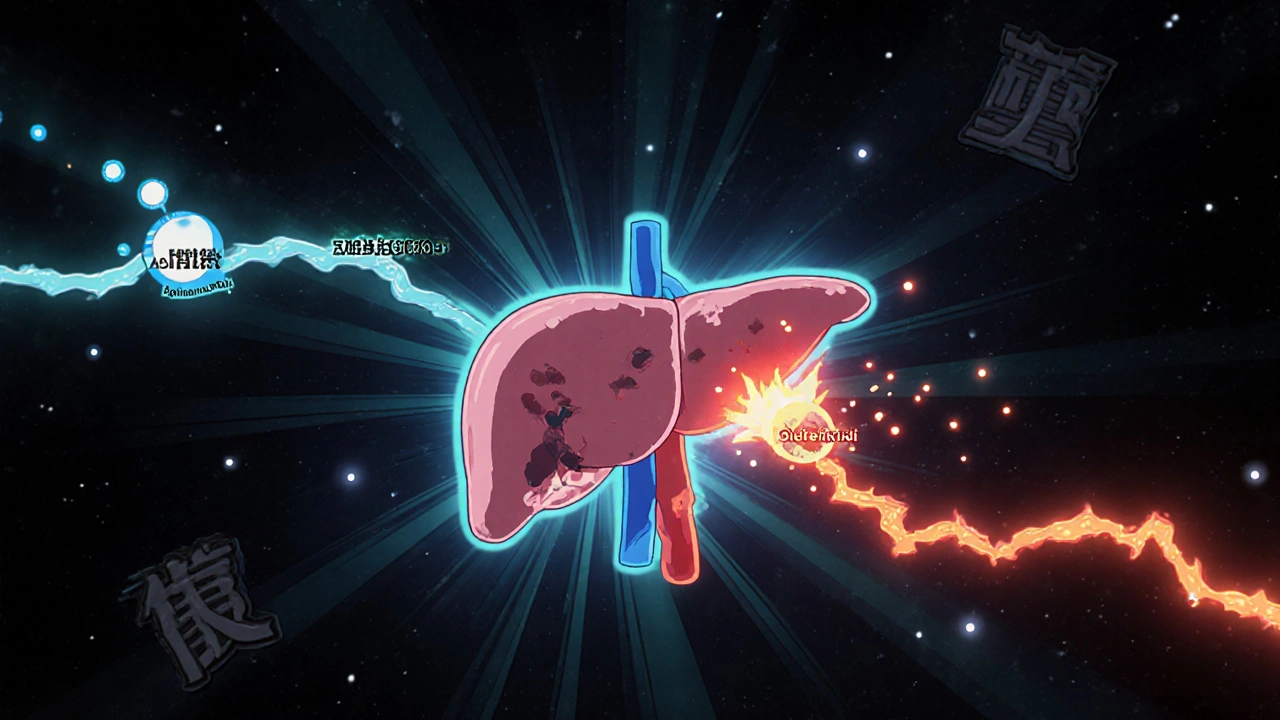
Who’s at Highest Risk?
Some people are far more vulnerable than others:- People with liver disease-especially cirrhosis or chronic hepatitis B or C. Their livers can’t handle even normal doses.
- Chronic alcohol users-even if they don’t drink every day, regular consumption changes how the liver processes acetaminophen.
- People with malnutrition or eating disorders-low protein intake reduces glutathione production.
- Those taking enzyme-inducing drugs-medications like phenytoin, carbamazepine, or rifampin speed up the toxic pathway.
- Older adults-liver function declines with age, and many take multiple medications.
One study found that 21 out of 24 patients who developed liver damage from acetaminophen were taking it as prescribed-but still overdosed because of hidden sources or reduced tolerance. That’s not negligence. That’s a system failure.
What to Do If You Think You’ve Taken Too Much
If you’ve taken more than 7.5 grams in a single dose, or more than 12 grams over 24 hours, go to the ER immediately. Don’t wait for symptoms. Liver damage can start without pain or nausea for the first 24 hours. By the time you feel sick, it may be too late.The antidote is acetylcysteine (NAC). It works by replenishing glutathione and binding to NAPQI. If given within 8 hours of overdose, it’s nearly 100% effective at preventing liver failure. Even if you wait 16 hours, it can still reduce damage. That’s why ERs give it before test results come back if there’s any suspicion of overdose.
The standard IV dose is 150 mg/kg over 15 minutes, then 50 mg/kg over 4 hours, then 100 mg/kg over 16 hours. Oral NAC is also effective, especially for less severe cases. Pregnant women can safely receive NAC-there’s no reason to delay treatment.
There’s one myth to bust: an allergic reaction to NAC in the past doesn’t mean you can’t get it again. If you had nausea or a rash before, your doctor can slow the infusion or give you antihistamines. The risk of liver failure is far greater than the risk of a mild reaction.
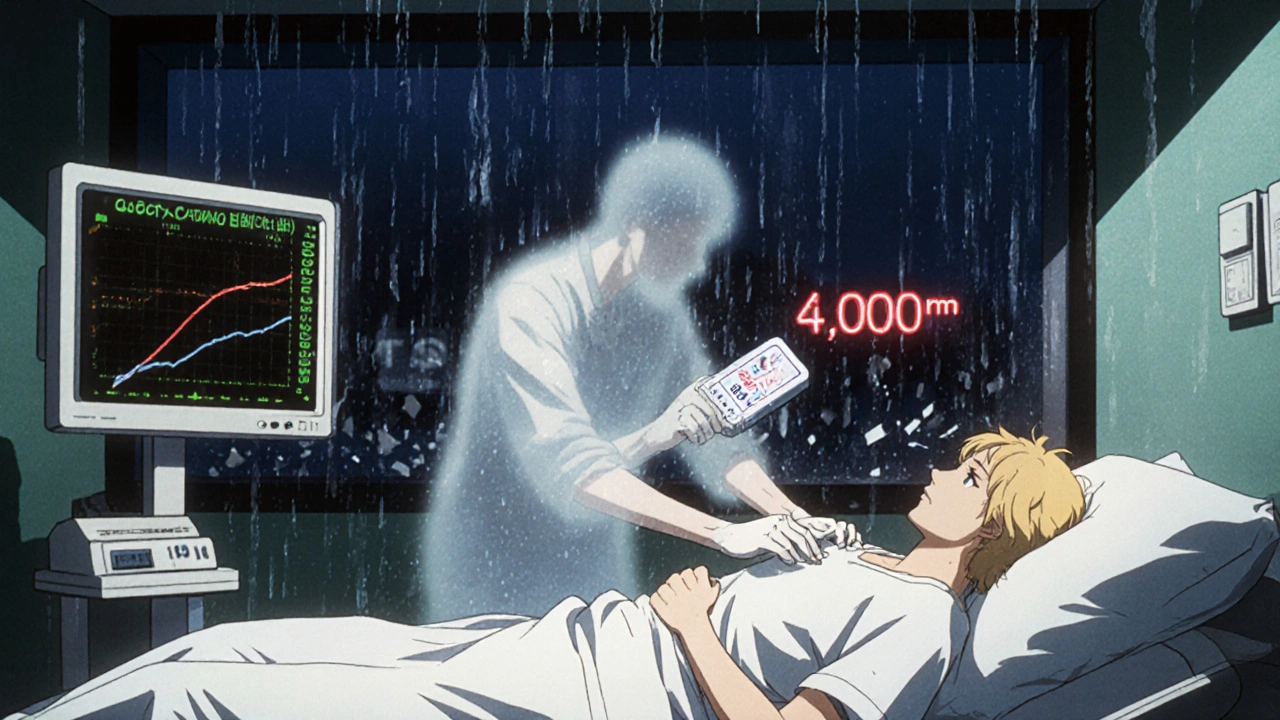
How to Use Acetaminophen Safely
Here’s what you need to do right now:- Check every medicine-look for “acetaminophen” or “APAP” on the label. Add up all sources.
- Never exceed 3,000 mg per day if you have liver disease or drink alcohol.
- Avoid alcohol completely while taking acetaminophen-even one drink can tip the balance.
- Use a pill organizer if you take multiple meds. Write down what you take and when.
- Ask your pharmacist to review all your medications. They can spot hidden acetaminophen.
- For kids, use the dosing syringe that comes with the medicine. Never use a kitchen spoon.
And if you’re managing chronic pain, talk to your doctor about alternatives. NSAIDs like ibuprofen carry their own risks, but they require much higher doses to cause liver damage. For some people, physical therapy, heat therapy, or even low-dose antidepressants are safer long-term options.
Final Reality Check
Acetaminophen isn’t evil. It’s one of the most effective pain relievers we have. But it’s not harmless. Its safety depends entirely on how you use it. For someone with a healthy liver and no alcohol use, 4,000 mg is fine. For someone with fatty liver disease, 2,000 mg is the ceiling. And for someone who drinks daily? Even 1,500 mg could be too much.The problem isn’t the drug. It’s the assumption that because it’s sold over the counter, it’s safe to use without thinking. That’s not true. Your liver doesn’t know the difference between Tylenol and a prescription pill. It only knows how much acetaminophen is in your system-and whether it has enough glutathione to clean up the mess.
Don’t wait for symptoms. Don’t assume you’re safe because you’re not overdosing “on purpose.” Read labels. Talk to your doctor. Reduce your dose. Your liver can’t speak, but it’s always telling you what it can handle-if you’re listening.
Can I take acetaminophen if I have fatty liver disease?
Yes, but you must reduce your dose. Most experts recommend no more than 2,000 to 3,000 mg per day, and some suggest 1,500 mg if your liver function is already impaired. Always check with your doctor. Fatty liver disease makes your liver more vulnerable to damage, even from normal doses of acetaminophen.
Is Tylenol safer than ibuprofen for the liver?
Yes, acetaminophen is easier on the kidneys and stomach than ibuprofen, but it’s far more dangerous for the liver if misused. Ibuprofen rarely causes liver damage unless taken in very high doses over long periods. Acetaminophen can cause severe liver injury at doses only slightly above the recommended amount. So while ibuprofen has other risks, acetaminophen is the bigger threat to liver health.
Can I take acetaminophen after drinking alcohol?
It’s not recommended. Even if you had a drink the night before, your liver may still be processing alcohol and have lower glutathione levels. Waiting 24 hours after drinking before taking acetaminophen is the safest approach. If you drink regularly, avoid acetaminophen entirely and talk to your doctor about alternatives.
How do I know if I’ve taken too much?
Early signs are often mild: nausea, vomiting, loss of appetite, and fatigue. But these can be mistaken for a stomach bug or flu. By the time jaundice (yellow skin), dark urine, or abdominal pain appear, liver damage may already be advanced. If you suspect an overdose, go to the ER immediately-even if you feel fine. Don’t wait.
Is there a blood test to check for acetaminophen toxicity?
Yes. The serum acetaminophen level is measured and plotted on the Rumack-Matthew nomogram, which shows whether you’re at risk for liver damage. This test is most accurate between 4 and 24 hours after ingestion. But if you’ve taken more than 10 grams or 200 mg/kg, doctors will give you the antidote before test results come back if there’s any doubt.
Can children with liver disease take acetaminophen?
Children with liver disease should only take acetaminophen under a doctor’s supervision. The standard pediatric dose is 10-15 mg/kg every 4-6 hours, but this may need to be reduced. Never use adult formulations for children. Always use the syringe provided with liquid medicine, and never guess the dose.
What happens if I miss a dose of acetylcysteine?
If you’re on the oral NAC regimen and miss a dose, take it as soon as you remember. If it’s close to the next scheduled dose, skip the missed one and continue the schedule. Do not double up. For IV NAC, missing a dose is rare since it’s administered in the hospital. If treatment is interrupted, inform your medical team immediately. Delaying NAC increases the risk of liver failure.

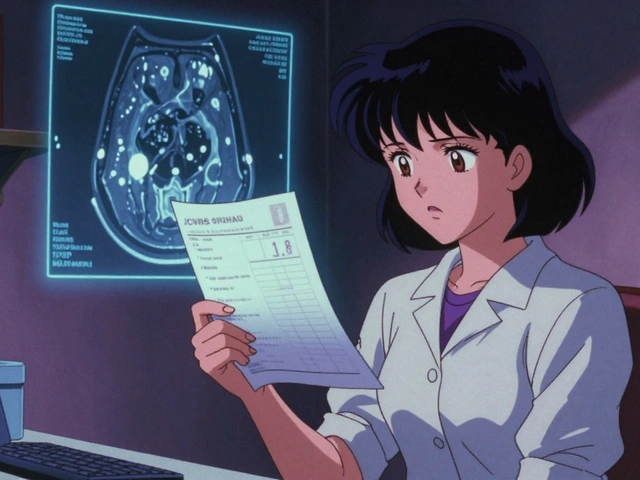
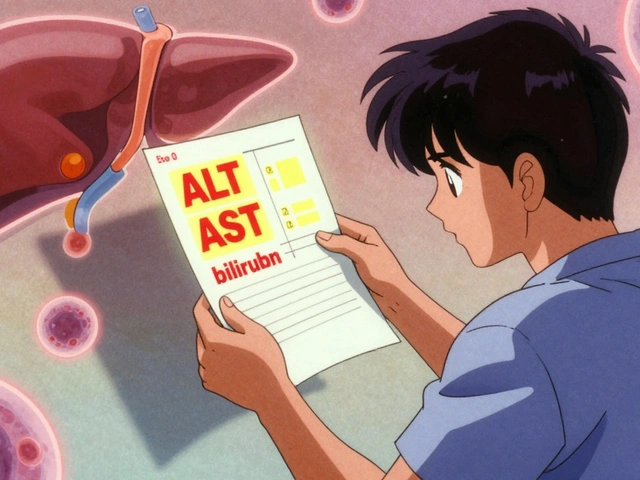
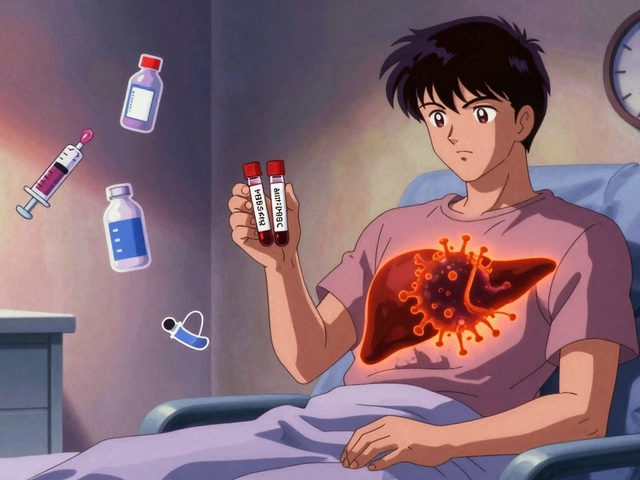

14 Comments
I had no idea acetaminophen was in so many cold meds. I took Tylenol and DayQuil last winter for my cold and thought I was being careful. Turns out I hit 5k mg in one day. My liver enzymes were elevated for weeks. Never again.
Man, this post is a godsend. I’ve been telling my coworkers for years that ‘OTC’ doesn’t mean ‘harmless.’ I’ve got a cousin with fatty liver who swears by Tylenol for his back pain-until I showed him the label on his NyQuil. Now he uses heat packs and ibuprofen. Small wins, folks.
Let me just say this: if you're taking more than one OTC med at a time, you're playing Russian roulette with your liver. The FDA knows this. The manufacturers know this. But they still put APAP in everything because it works-and because people don’t read labels. I used to work in pharmacy. I saw it every day: ‘I didn’t know!’ No, you didn’t. But you should’ve. Your liver doesn’t care if you’re ‘just trying to feel better.’ It just knows you’re poisoning it.
this whole thing is a scam by big pharma to sell more nac and liver transplants. acetaminophen is perfectly safe if you dont drink. the real danger is the fearmongering. why do you think they changed the labels? to sell more pills. also gluthatione is just a fancy word for pee. i took 6000mg once and felt fine.
So let me get this straight-you’re telling me someone who drinks a glass of wine every night shouldn’t take Tylenol? That’s the level of medical advice we’re giving now? Next they’ll say breathing is dangerous if you have a cough.
I’m a nurse, and I’ve seen too many people come in with acute liver failure because they thought ‘it’s just Tylenol.’ One woman took 3,000 mg a day for months because her arthritis hurt, and she didn’t realize her sleep aid had APAP too. She didn’t even know she had fatty liver. No one warned her. Please-just check your meds. It takes 30 seconds.
Look, I’m not a doctor, but I’ve been managing chronic pain for 12 years. I switched from Tylenol to meloxicam after my liver scan showed mild steatosis. It’s not perfect-stomach issues, yeah-but at least I’m not ticking time bomb. Also, I started using a pill organizer with color-coded slots. It’s dumb, but it works. You don’t need to be a genius to save your liver. You just need to be consistent.
Let me tell you about my uncle-he was a retired mechanic, 72, drank two beers a night, took Tylenol for his knees, and used Theraflu every winter. One morning he woke up vomiting, yellow eyes, confused. ER. Liver transplant. Now he’s on immunosuppressants and can’t even have a single sip of beer. He didn’t think it was a big deal. He thought ‘I’m not an alcoholic.’ But the liver doesn’t care about your self-image. It only cares about the math. 4,000 mg + 325 mg + 325 mg = death. Simple as that. And now he’s on a waiting list. I’m telling you this so you don’t end up like him.
It’s not the drug. It’s the delusion. We’ve been conditioned to believe that because something is sold on a shelf, it’s safe. We’ve been taught to trust labels, trust ‘natural,’ trust ‘doctor-recommended.’ But the system is designed to sell, not to safeguard. Acetaminophen is a perfect example: cheap, effective, and lethally misunderstood. We are not patients. We are consumers. And the market profits from our ignorance.
Wow. So I’m supposed to stop taking Tylenol because I have a glass of wine with dinner? What’s next? No water if you have kidneys?
I am a pharmacist in India, and I see this daily. Patients take multiple cold remedies, each with APAP, and then ask why they feel unwell. We have no regulation on combination products here. I always write down the total daily dose on the prescription. I wish more people would ask. Your liver cannot scream. It can only whisper-and most people ignore the whisper until it’s too late.
Let’s be real-this is just fear porn. People die from Tylenol? So what? 1,600 cases a year in a country of 330 million? That’s 0.0005%. Meanwhile, thousands die from NSAIDs, opioids, and alcohol. But you don’t see a 10-page essay on ibuprofen. This is selective outrage. The real problem? People don’t read labels. Blame the user, not the drug.
As a proud British citizen, I must say: this American obsession with dosage limits is frankly absurd. In the UK, we have a sensible 4,000mg cap for all adults, regardless of lifestyle. We don’t coddle people with ‘if you drink’ warnings-we teach responsibility. The fact that Americans need this much hand-holding suggests a deeper cultural malaise. Also, I have personally taken 6,000mg in 24 hours while hungover. I am still here. And I have a PhD.
So if I drink, I can’t take Tylenol? What if I just had one beer? Do I need a breathalyzer before I pop a pill? This is ridiculous. I’ve been taking it for 20 years. My liver’s fine. You’re just trying to make people paranoid so they buy your ‘safe’ alternatives. Spoiler: they’re all just as bad.